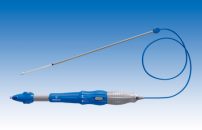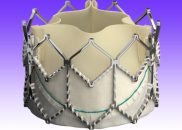This new device offers the advantage of a lower frame height, which reduces the chance of coronary occlusion. The delivery system is totally motorized and the valve can be repositioned. In addition, the sheath is “14 F” for all valve sizes (23, 26 and 29mm). 203 patients were included, all with severe aortic stenosis…
ARTE: Aspirin or Aspirin and Clopidogrel after TAVR?
Courtesy of SBHCI. This study presented at Euro PCR and simultaneously published by JACC Cardiovascular Interventions poses a question that has remained unanswered since the start of TAVR. There is little information on the optimal antithrombotic therapy after transcatheter aortic valve replacement (TAVR). In general, patients receive between 1 and 6 months of dual…
REPRISE III: Lotus and CoreValve Compared in High-Risk or Inoperable Patients
The efficacy of transcatheter aortic valve replacement (TAVR) has been well-established. However, its limitations include suboptimal deployment and paravalvular leak. The Lotus system is a fully repositionable and retrievable device with controlled mechanical expansion. It features an adaptive seal to minimize paravalvular leak, it does not require early pacing during deployment, and, given its early…
Further Evidence on Managing Dysfunctioning Bioprostheses with Balloon-Expandable Prostheses
Early experience with the valve-in-valve technique in the treatment of failed bioprosthetic surgical valves in transcatheter aortic valve replacement (TAVR) has yielded acceptable acute procedural results. This turned the technique into another therapeutic option, one that could even cause the reassessment of the age limit for the surgical implantation of a mechanical or bioprosthesis valve.…
TAVR: minimalist strategy Is favorable in severe COPD
Courtesy of Dr. Carlos Fava. The presence of chronic obstructive pulmonary disease (COPD) is a criterion for which patients are ruled out for surgery and proposed as candidates for its current alternative, transcatheter aortic valve replacement (TAVR). A minimalist strategy could benefit this patient group, given the use of conscious sedation instead of general anesthesia. …
TAVR in Intermediate-Risk Patients: Is It as Effective as Surgical Aortic Valve Replacement?
Courtesy of Dr. Carlos Fava. Transcatheter aortic valve replacement (TAVR) has proven to be beneficial for extreme- and high-risk patients. It is also increasingly used in intermediate-risk patients, and it has been hinted at for low-risk patients. However, different sectors in the medical community still challenge the existence of real TAVR benefit. This assessment consisted…
Bicuspid Aortic Valve Stenosis Still Challenging for TAVR
Courtesy of Dr. Carlos Fava One of the present challenges of TAVR is bicuspid aortic valve stenosis (AS), since it presents a different distribution and structure, associated to greater and more irregular calcification. There are only small series of devices and their use is still controversial. The study analyzed 561 patients with severe bicuspid…
Cardiovascular MR Perfusion Imaging: Good Initial Alternative in Stable Chronic Angina
In the initial management of patients with stable chronic angina, a non-invasive strategy with cardiovascular MR perfusion imaging seems to provide similar results to invasive strategies. At one year, MACE rate (combination of all cause death, non-fatal infarction and target vessel revascularization) resulted 3.3% for MRI vs. 3.9% for fractional flow reserve (FFR) informed…
Surgery or TAVR in intermediate risk? Results of the SURTAVI Study
Courtesy of Dr. Gustavo Leiva. Transcatheter aortic-valve replacement (TAVR) with the use of a self-expanding prosthesis is superior to medical therapy in patients with severe, symptomatic aortic stenosis in whom surgical aortic-valve replacement has been associated with prohibitive risk. Among patients considered at high risk, TAVR may be an alternative to surgery. The comparative…
Percutaneous Repair of Paravalvular Leaks After TAVR: The Challenge of Identifying Eligible Subjects
Courtesy of Dr. Carlos Fava. This study enrolled 72 patients who underwent transcatheter aortic valve replacement with an Edwards Sapiens valve, and then experienced a leak of at least moderate severity. Fifteen of them underwent a percutaneous leak repair after identification of the leak mostly through the presence of symptoms. Both groups were similar. Patients who…









